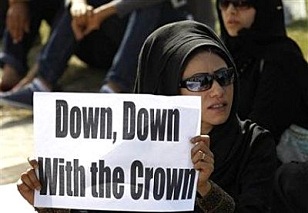Oh Canada! Imposing Austerity on the World’s Most Resource-rich Country

Mining equipment sits unused in front of the Syncrude
oil sands extraction facility near Fort McMurray, Alta.
The oil sands are seen as a major driver to Canada's
economy despite claims extraction poisons the rivers
and air in northern Canada. (Mark Ralston/AFP/Getty)
Even the world’s most resource-rich country has now been caught in the debt trap. Its once-proud government programs are being subjected to radical budget cuts—cuts that could have been avoided if the government had not quit borrowing from its own central bank in the 1970s.
Last week in Ottawa, the Canadian House of Commons passed the federal government’s latest round of budget cuts and austerity measures. Highlights included chopping 19,200 public sector jobs, cutting federal programs by $5.2 billion per year, and raising the retirement age for millions of Canadians from 65 to 67. The justification for the cuts was a massive federal debt that is now over C$ 581 billion, or 84% of GDP.
An online budget game furnished by the local newspaper the Globe and Mail gave readers a chance to try to balance the budget themselves. Possibilities included slashing transfer payments for elderly benefits, retirement programs, health benefits, and education; cutting funding for transportation, national defense, economic development and foreign aid; and raising taxes. An article on the same page said, “The government, in reality, doesn’t have that many tools at its disposal to close a large budgetary deficit. It can either raise taxes or cut departmental program spending.”
It seems that no gamer, lawmaker or otherwise, was offered the opportunity to toy with the number one line item in the budget: interest to creditors. A chart on the website of the Department of Finance Canada titled “Where Your Tax Dollar Goes” showed interest payments to be 15% of the budget—more than health care, social security, and other transfer payments combined. The page was dated 2006 and was last updated in 2008, but the percentages are presumably little different today.


























